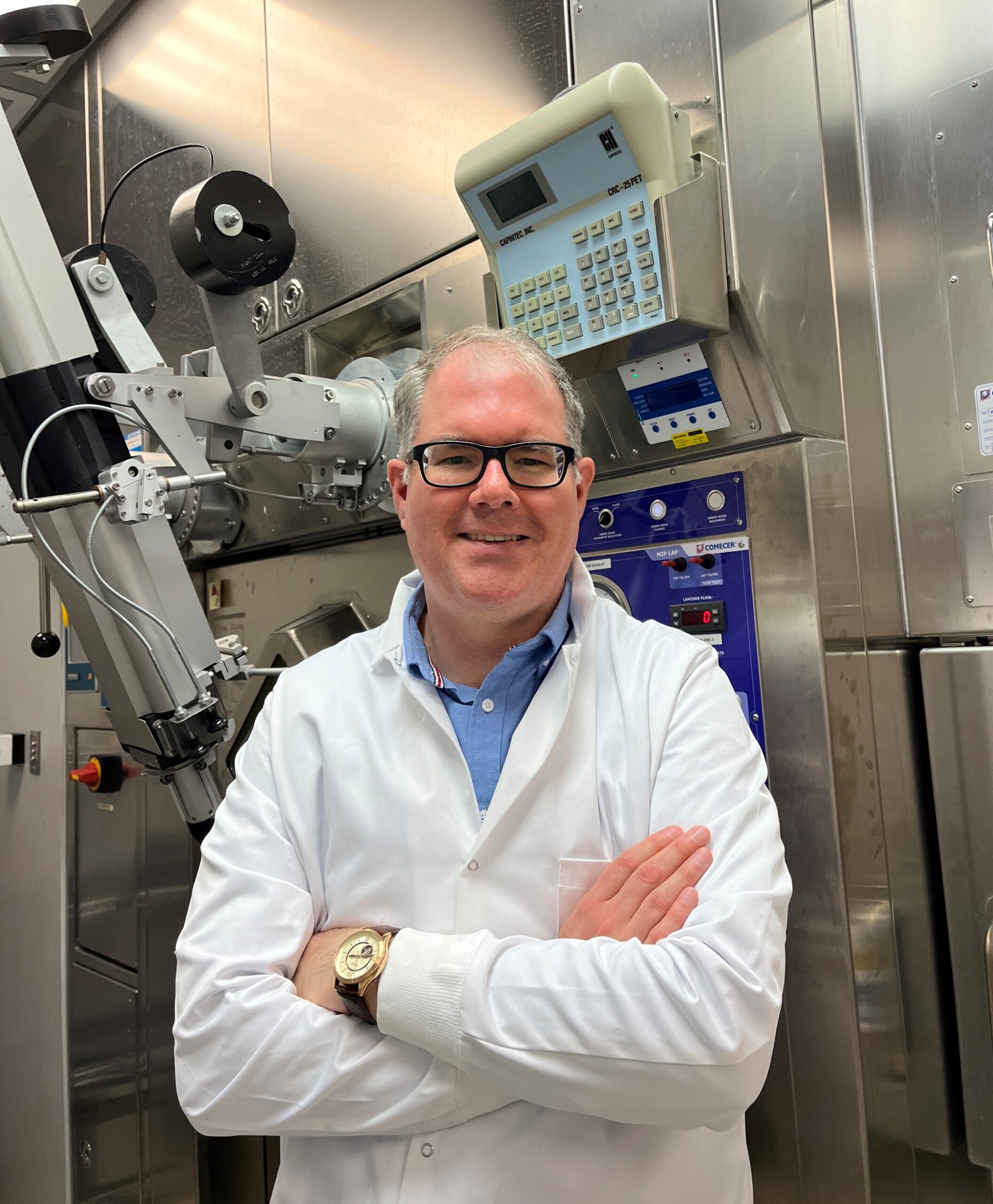Project title: Efficient automated synthesis of silicon-[18F]fluoride acceptor (SiFA)-based neuroendocrine tumour imaging agents via “non-anhydrous, minimally basic” (NAMB) radio-fluorination chemistry.
James Inkster, PhD McMaster University

- Status: Active
- Year(s): 2023
- Grant Type: Collaborative
- Research Type: Basic
- Primary Tumor Site: GI/Pancreas
Description
Dr. Inkster will develop state-of-the-art 18F radiolabeling methods designed to a) simplify the clinical production of peptide-based PET tracers targeting gastroenteropancreatic neuroendocrine tumors (GEP-NETs) and b) facilitate the invention of novel 18F-labelled peptide hormone analogues useful for the diagnosis and localization of insulinomas.
What critical NET problem will you try to solve through your research?
The development of 18F-GEP-NET tracers has been impeded by synthetic challenges associated with the laborious radio-bioconjugation methods designed to indirectly radiolabel ligands of NET-associated peptide receptors under the automated conditions required for clinical use.
Why is this important?
Flourine-18 exhibits second-to-none PET imaging characteristics and is increasingly available due to worldwide demand for [18F]FDG. Thus, 18F-GEP-NET imaging agents that exhibit all the advantages of their radio-metalated (e.g. 111In, 68Ga) counterparts- namely, the straightforward, kit-like preparation of high molar activity radiopharmaceutical via automated synthesizers- would be highly desirable.
What will you do as part of this research project?
By merging two non-canonical 18F-labeling strategies- Silicon-[18F]fluoride Acceptor (SiFA) 19F-for-18F isotopic exchange and “non-anhydrous, minimally basic” (NAMB) 18F-fluorination chemistry, the Inkster lab plans to design and validate a single-step, automated radiosynthesis of a SiFA-modified Tyr3-octreotate derivative. These learnings with then be leveraged towards the design, synthesis and small animal PET assessment of novel SiFAylated peptides targeting the glucagon-like peptide 1 (GLP-1) receptor for insulinoma imaging.
How might your research improve the diagnosis and/or treatment of NETs?
This research seeks to generally improve and expand the clinical utility of high resolution 18F-PET imaging for NET diagnosis, staging and evaluation of therapeutic efforts. Regarding the treatment of insulinoma-induced hypoglycemia specifically, successful pre-operative imaging permits determination of tumor location on the pancreas and can guide the choice of full pancreatic resection vs partial resection vs tumor enucleation. The use of radio-metalated peptides for this application usually results in extensive renal uptake, which can complicate the delineation of nearby pancreatic lesions. The 18F-labelled GLP-1 receptor agonists developed in the Inkster lab are expected to exhibit reduced kidney retention, resulting in improved PET images.
What is your next step?
Establishment of a simple, reproducible and automated radiosynthetic protocol will permit preclinical assay of an expanded library of peptide sequences and pendant modifications. Highly promising GEP-NET tracers will be singled out for further translational development in collaboration with clinical researchers.
Additional Details
- City: Hamilton
- State: Ontario
- Country: Canada
- Grant Duration: 2 years
- Grant Partner: Education and Research Foundation for Nuclear Medicine and Molecular Imaging
DISCLAIMER
NETRF funds laboratory research to understand the development of neuroendocrine tumors and translational research to explore new concepts in treatment. Research grant descriptions and research updates from NETRF are not intended to serve as medical advice. It can take years for research discoveries to be fully validated and approved for patient care. Always consult your health care providers about your treatment options.
